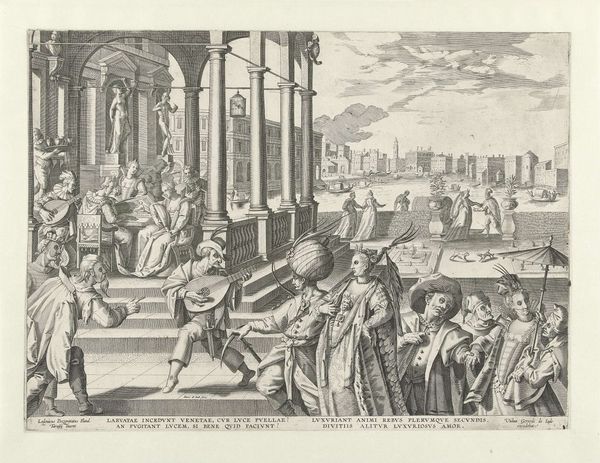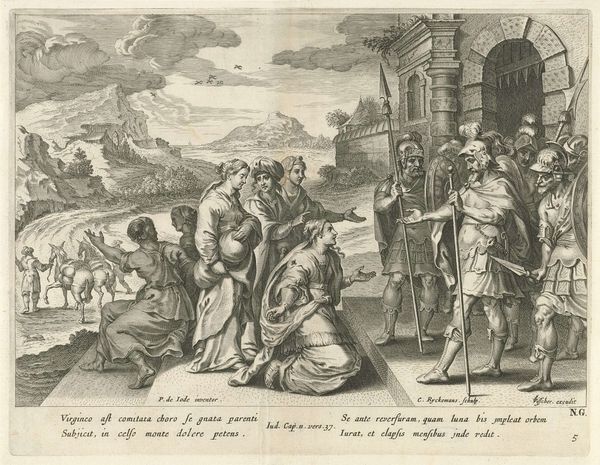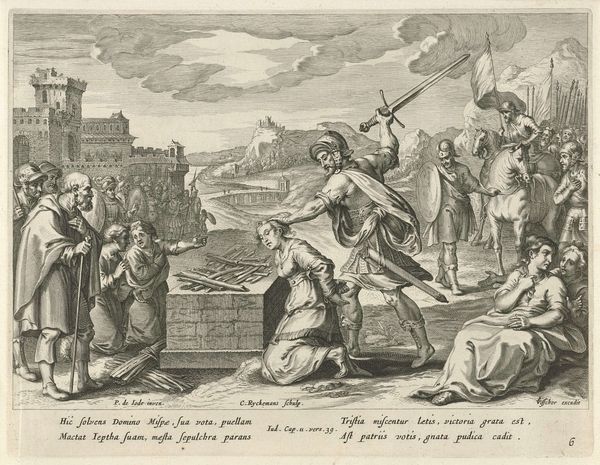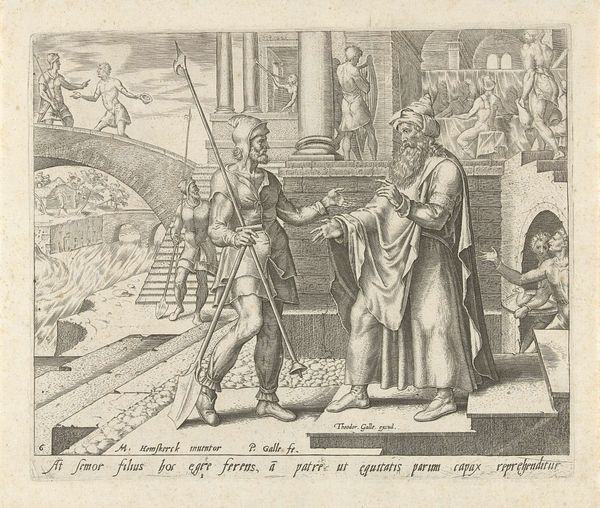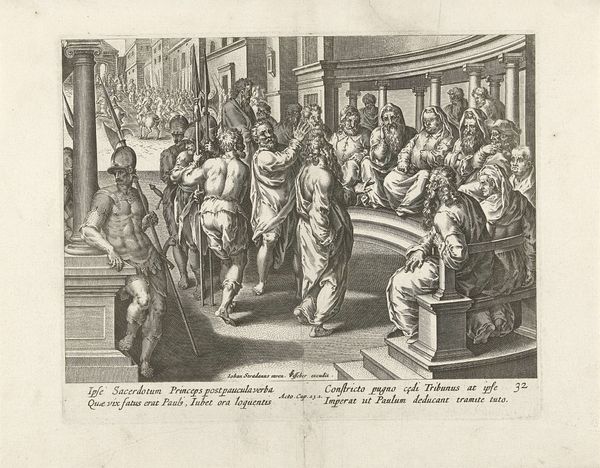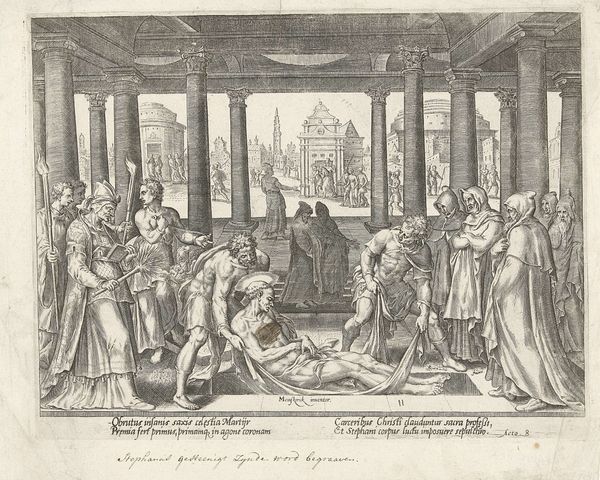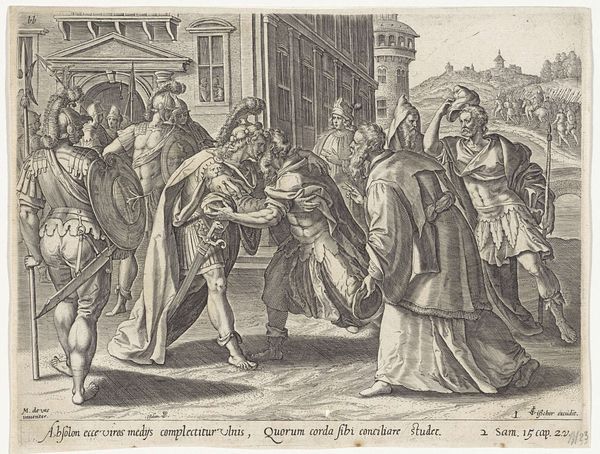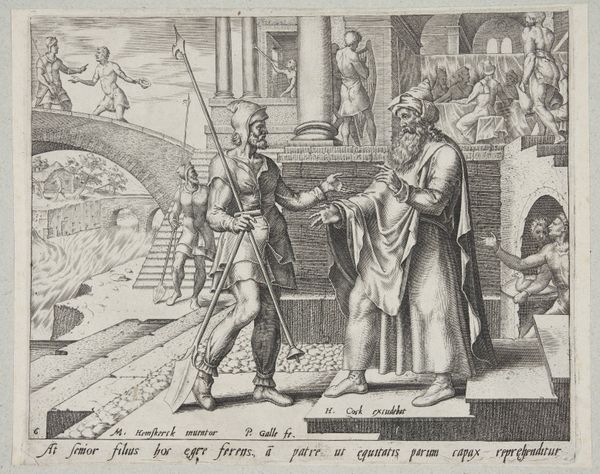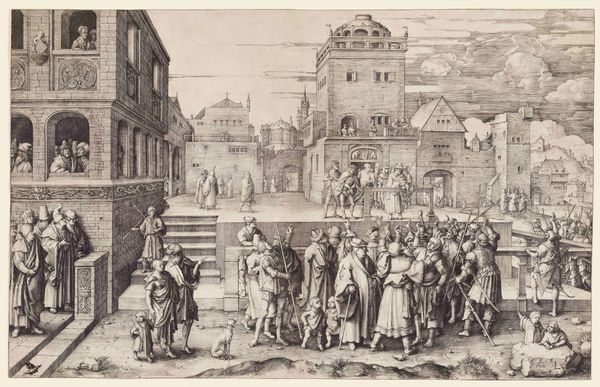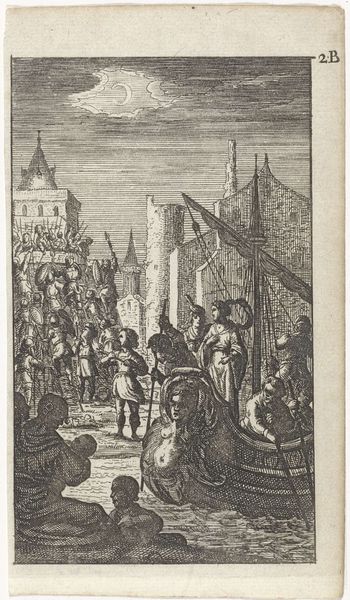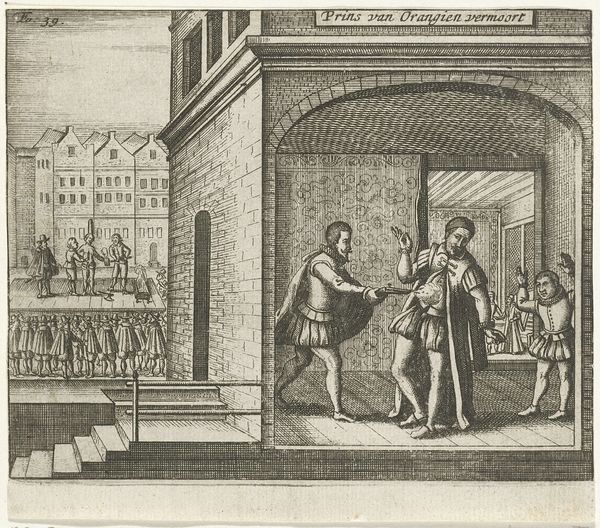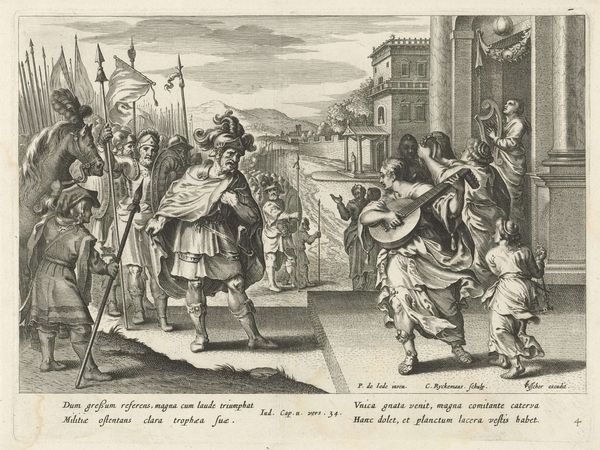
print, engraving
# print
#
pen illustration
#
old engraving style
#
mannerism
#
figuration
#
line
#
history-painting
#
engraving
Dimensions: height 137 mm, width 181 mm
Copyright: Rijks Museum: Open Domain
Curator: So, we are looking at "Romulus en Hersilia," an engraving made between 1572 and 1573 by Giovanni Battista Fontana, currently residing here at the Rijksmuseum. Editor: It's incredible how much detail Fontana packed into this print! The scene feels…tense, but also very grand. All those figures and the architectural setting are very impressive, but what particularly strikes me is the labour of creating such fine detail using the printmaking process. What does this work convey to you? Curator: The texture is key. Notice the lines; they are not just depicting forms, but indicating the material conditions of its making and consumption. Engravings were reproducible; how might this accessibility have shaped its original reception? Consider how it functions in society and for whom it was made. How did prints like these serve cultural or political purposes, especially in representing historical narratives? Editor: It's interesting you mention that, I hadn’t thought about that at all. I was focused more on the myth of Romulus and Hersilia itself and the story of brokering peace. But you’re right. To produce engravings required labor – not just the artist, but the workshop that may have assisted in the printing and distribution. That brings it down to earth a bit, doesn't it? It moves from the realm of myth to the realities of production and consumption in the 16th century. Do you think understanding this affects how we value it today? Curator: Precisely. Seeing it as a commodity—produced, circulated, and consumed—shifts our understanding. Instead of solely focusing on the narrative, we examine the means through which that narrative reached its audience. The paper itself, the ink used, and the press that made the multiple reproductions available--each component is telling. By considering the materiality, we reveal much more about its value system. Editor: So, considering it this way invites us to think not just about who is depicted, but about who produced, distributed, and consumed the image – a more complete understanding of the art and its purpose. Thanks, that’s a fresh perspective for me. Curator: It's all about tracing the process from concept to object, then object to consumption. An endless circle of understanding.
Comments
No comments
Be the first to comment and join the conversation on the ultimate creative platform.
